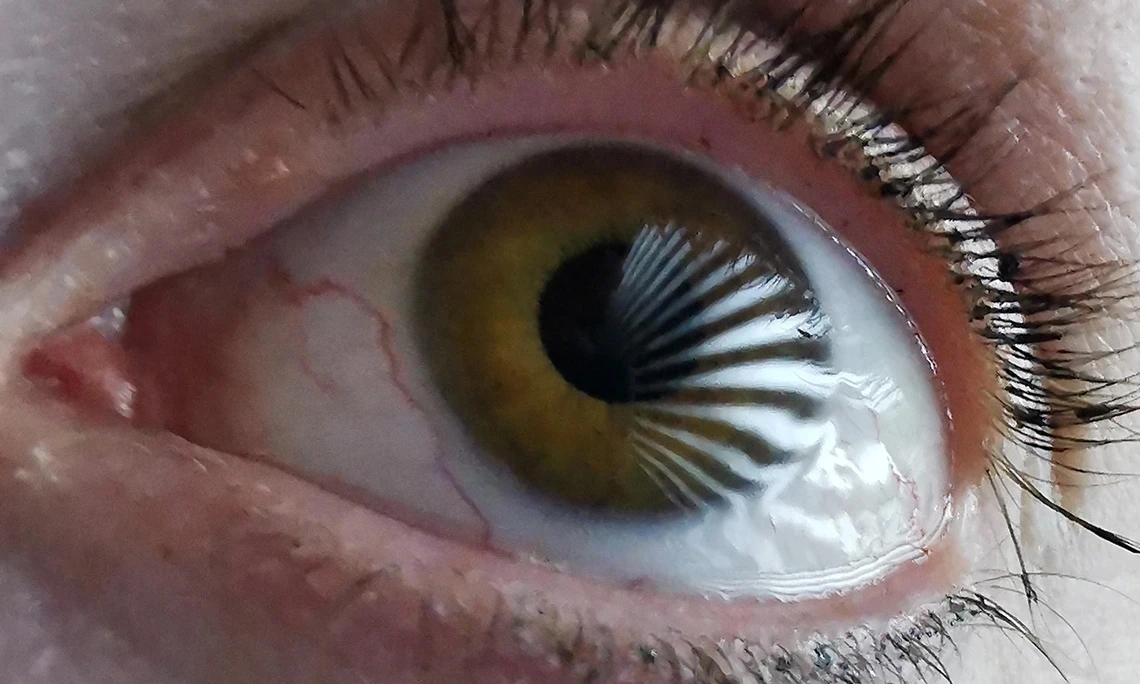New 3D technology paves way for next-generation eye tracking

A pattern of distorted lines is visible as a reflection in this close-up view of a human eye. By observing the deformation of illumination patterns reflected off the eye's surface, researchers in Willomitzer's group can capture gaze direction information from tens of thousands of surface points instead of the dozen or so used by conventional eye-tracking methods.
Florian Willomitzer
Eye tracking plays a critical role in the latest virtual and augmented reality headsets and is an important technology in the entertainment industry, scientific research, medical and behavioral sciences, automotive driving assistance and industrial engineering. Tracking the movements of the human eye with high accuracy, however, is a daunting challenge.
Researchers at the University of Arizona Wyant College of Optical Sciences have now demonstrated an innovative approach that could revolutionize eye-tracking applications. Their study, published in Nature Communications and led by Florian Willomitzer, associate professor of optical sciences, finds that integrating a powerful 3D imaging technique known as deflectometry with advanced computation has the potential to significantly improve state-of-the-art eye tracking technology.
With a pending patent and plans for commercialization through Tech Launch Arizona, the research paves the way for a new era of robust and accurate eye-tracking.
Read the full story on UA News: New 3D technology paves way for next generation eye tracking, April 1, 2025

